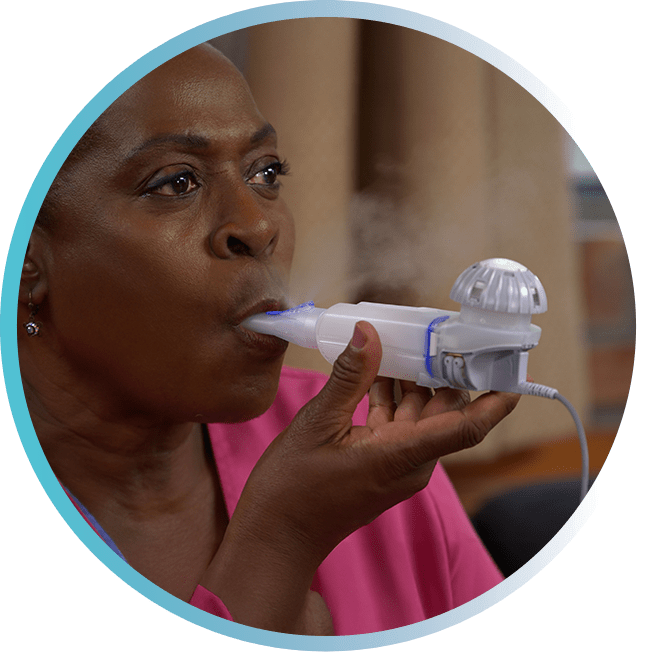Pipeline
OUR PIPELINE
We are currently advancing a pipeline of inhaled therapeutic candidates intended to reduce systemic exposure and enhance efficacy by delivering medication directly to the site of disease.
Program
IND
Phase 1
Phase 2
Phase 3
AP01
(Inhaled Pirfenidone)

MIST PPF Clinical Study Details

Target & Approach
Pirfenidone is a small molecule inhibitor that has anti-inflammatory and anti-fibrotic effects through modulation of cytokines and growth factors, although the precise mechanism of its action remains incompletely understood.
Safety and toxicity often limit the use of oral pirfenidone. Side effects are usually managed by dose reductions, which in turn can decrease the effectiveness of the drug.
Avalyn has reformulated pirfenidone for inhalation via an approved handheld eFlow® nebulizer. This aerosolized, soft mist delivery targets the lungs directly with smaller doses than oral formulation, maximizing pirfenidone’s effect on diseased lung tissue while minimizing exposure to other tissues.
Now recruiting – visit MISTPPFSTUDY.COM >
Clinical Development Status
Avalyn is currently enrolling patients into the Phase 2b MIST study of AP01 for the treatment of progressive pulmonary fibrosis. For more information, please visit the study website (US only) or the study’s ClinicalTrials.gov page (NCT06329401).
Avalyn completed the Phase 1b ATLAS study of AP01, where the 100 mg BID dose achieved near-stabilization of lung function over 48 weeks of treatment (West et al., 2023). AP01 was well tolerated with fewer systemic adverse events compared to historic oral pirfenidone. A fully enrolled open label extension study is ongoing in pulmonary fibrosis (ACTRN12621000170820).
AP02
(Inhaled Nintedanib)
Target & Approach
Nintedanib is a small molecule inhibitor of multiple tyrosine kinases. Nintedanib is known to disrupt the cellular processes that lead to lung fibrosis, slowing the progression of pulmonary fibrosis. Oral nintedanib, unfortunately, is associated with side effects and toxicities, including diarrhea, hyperbilirubinemia, and drug-induced liver injury.
Avalyn has reformulated nintedanib for inhaled aerosol lung delivery. Its direct delivery to the lungs is intended to maximize nintedanib’s effect on diseased lung tissue while minimizing exposures to other tissues.
Clinical Development Status
Avalyn has completed single-ascending dose (SAD) and multiple-ascending dose (MAD) Phase 1 clinical trials in healthy adult volunteers and patients with idiopathic pulmonary fibrosis (IPF). Avalyn plans to advance AP02 into a Phase 2 clinical program for patients with IPF.
AP03
(Inhaled Fixed-Dose Combination of Pirfenidone & Nintedanib)
Target & Approach
The combination of pirfenidone and nintedanib can offer patients significant efficacy advantages over either product alone. A combination of these oral medications has not been feasible due to their additive side effect profiles.
Avalyn’s AP03 is a fixed-dose combination of pirfenidone and nintedanib for inhaled aerosol lung delivery. Our data indicate that as stand-alone therapies, Avalyn’s AP01 and AP02 may substantially reduce or eliminate the adverse effects of oral pirfenidone and oral nintedanib.
Development Status
Avalyn is currently completing non-clinical work for AP03.
Research Programs
(Undisclosed)